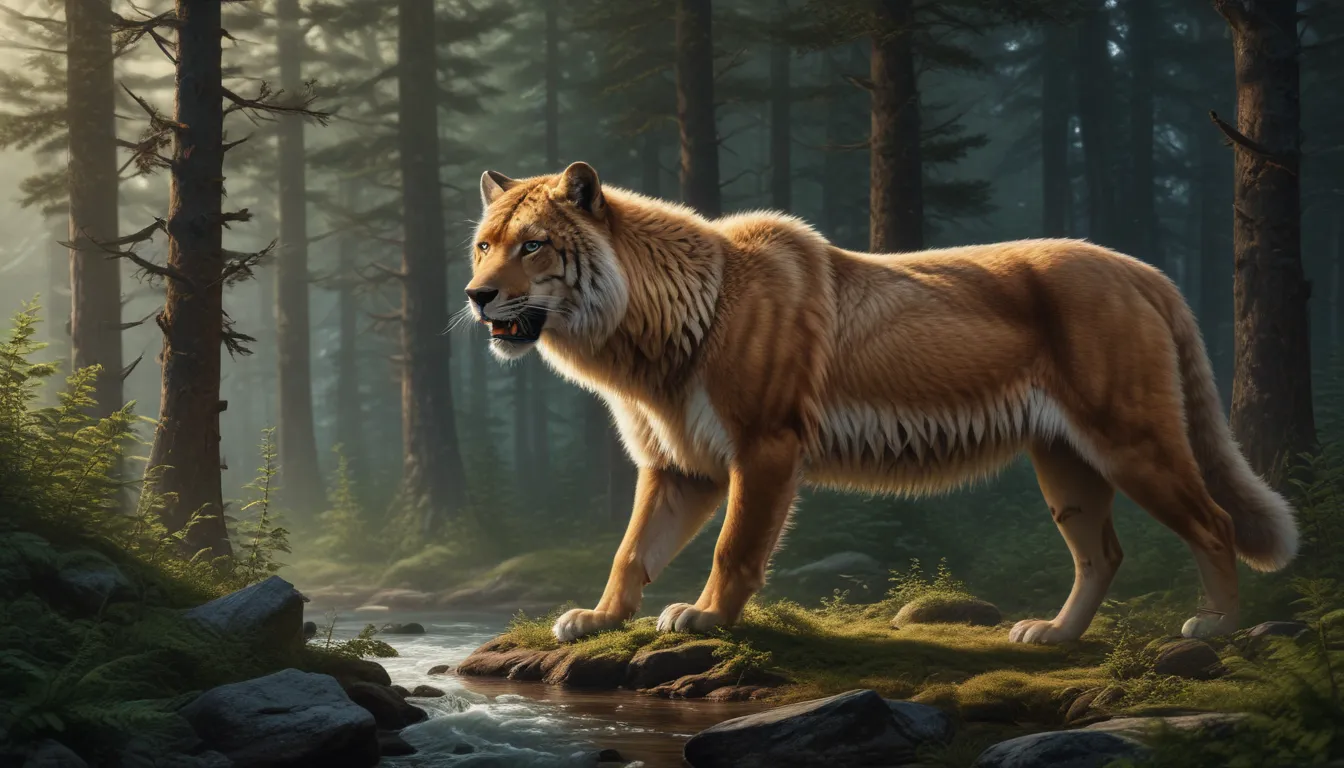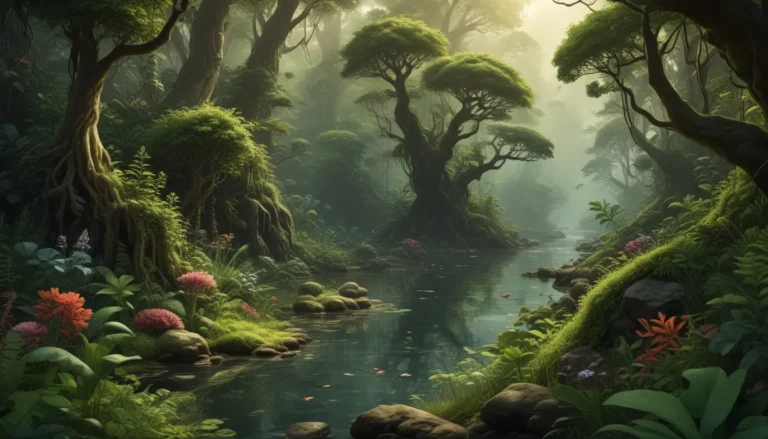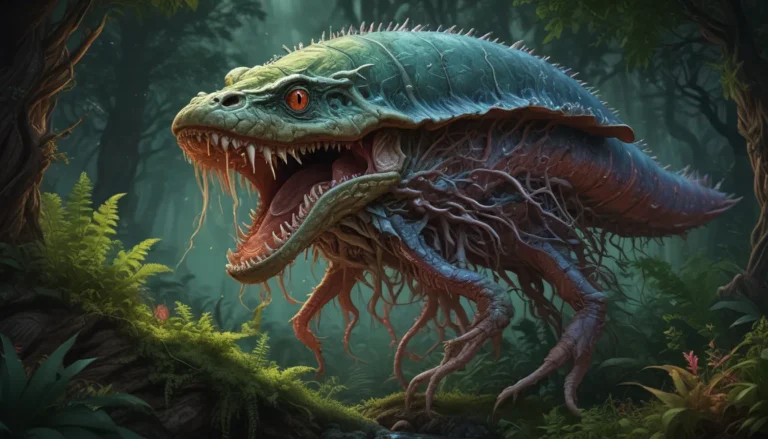A Note About Images: The images used in our articles are for illustration purposes only and may not exactly match the content. They are meant to engage readers, but the text should be relied upon for accurate information.
Welcome to the enchanting world of the Taiga, also known as the Boreal Forest, a vast and awe-inspiring biome that stretches across North America, Europe, and Asia. This unique ecosystem mesmerizes with its breathtaking landscapes and diverse array of plant and animal species. Join us on a journey through the Taiga as we uncover nine astonishing facts that will deepen your appreciation for this remarkable forested wonderland.
Discovering the Marvels of the Taiga
The Taiga: A Titan Among Biomes
Covering approximately 17% of the Earth’s land area, the Taiga reigns as the largest biome on our planet. Extending across Russia, Canada, Scandinavia, and Alaska, this majestic forest showcases its vastness and pivotal role in the global ecosystem.
A Haven for Diverse Wildlife
The Taiga is a bustling ecosystem teeming with a plethora of wildlife species. From iconic mammals like wolves, bears, and moose to a myriad of bird species including owls and eagles, this forest provides a habitat for a multitude of extraordinary creatures.
Embracing Extreme Temperatures
With long, freezing winters and short, cool summers, the Taiga is famous for its extreme temperature variations. Winter temperatures can plummet below -40 degrees Celsius (-40 degrees Fahrenheit), while summer brings a more temperate climate of around 20 degrees Celsius (68 degrees Fahrenheit).
Unveiling the Secrets of the Taiga
Guardian of Carbon Sequestration
The Taiga acts as a vital carbon sink, absorbing copious amounts of carbon dioxide from the atmosphere and playing a crucial role in mitigating climate change. The vast forests of the Taiga store more carbon than any other terrestrial ecosystem on Earth.
A Treasure Trove of Resources
Beyond its ecological significance, the Taiga provides a wealth of valuable resources including timber, pulpwood, minerals, berries, mushrooms, and medicinal plants. These resources have been traditionally utilized by indigenous communities for centuries, highlighting the deep connection between humans and nature.
Symphony of Migratory Birds
During the summer months, the Taiga transforms into a bustling haven for numerous migratory bird species. These feathered travelers journey thousands of miles to breed and take advantage of the abundant food sources found within the forest.
The Enigmatic Permafrost Phenomenon
In many parts of the Taiga, the ground remains perpetually frozen, a condition known as permafrost. This frozen layer presents unique challenges to plants and animals, shaping the overall characteristics of the ecosystem and adding to the mystique of the Taiga.
Nurturing Connections with Indigenous Communities
Guardians of Tradition
Indigenous communities such as the Sami people in Scandinavia and the First Nations in Canada have inhabited the Taiga for millennia. These communities have forged intricate relationships with the forest, relying on its resources for sustenance, cultural practices, and spiritual connections.
Facing Threats and Challenges
Despite its ecological importance, the Taiga is under siege from various threats including climate change, deforestation, and unsustainable logging practices. Efforts are underway to protect and conserve this unique biome for future generations and ensure its survival for years to come.
Embracing the Wonders of the Taiga
The Taiga, with its astonishing biodiversity, extreme temperatures, and pivotal role in climate regulation, stands as a testament to the resilience and magnificence of nature. By preserving this incredible forest, we can secure a sustainable future for our planet and all its inhabitants.
Embarking on an Ecological Exploration
From its captivating wildlife and unique vegetation to its essential role in the Earth’s ecosystem, the Taiga is a captivating biome that beckons us to delve deeper into its mysteries. Exploring the wonders of the Taiga allows us to gain a deeper understanding of the intricate connections between organisms and their environment.
Nurturing Respect for Nature’s Diversity
The Taiga serves as a treasure trove of scientific exploration and a poignant reminder of the remarkable diversity and adaptability of nature. As we continue to study and appreciate this remarkable ecosystem, let us also endeavor to protect and conserve it for the benefit of future generations to cherish and cherish.
Frequently Asked Questions
Q: What is the taiga?
A: The taiga, also known as the boreal forest, is a vast biome found in the high northern latitudes of the world characterized by dense coniferous forests and cold temperatures.
Q: What kind of wildlife can be found in the taiga?
A: The taiga is home to a diverse range of wildlife, including species such as moose, wolves, bears, lynx, reindeer, and a variety of bird species.
Q: Why is the taiga important?
A: The taiga plays a crucial role in the global ecosystem by providing habitat for numerous species, regulating the climate, and acting as a carbon sink by absorbing significant amounts of carbon dioxide from the atmosphere.
Q: How do plants adapt to the taiga environment?
A: Many plants in the taiga have developed adaptations to survive in the harsh conditions, such as needle-like leaves that reduce water loss and the ability to photosynthesize year-round, even in low light conditions.
Q: Can humans live in the taiga?
A: While the taiga may present challenges for human habitation, indigenous communities have been living in the taiga for centuries, utilizing its resources and developing unique cultural practices.
Q: How can we protect the taiga?
A: Protecting the taiga involves implementing measures such as sustainable forestry practices, conservation efforts, and reducing greenhouse gas emissions to mitigate the effects of climate change.
The Taiga enthralls with its beauty, complexity, and resilience, inviting us to delve into its secrets and embrace its wonders. Let us unite in our efforts to safeguard this precious ecosystem for generations to come, ensuring that the Taiga continues to astound and inspire us with its astonishing mysteries and magnificence.






